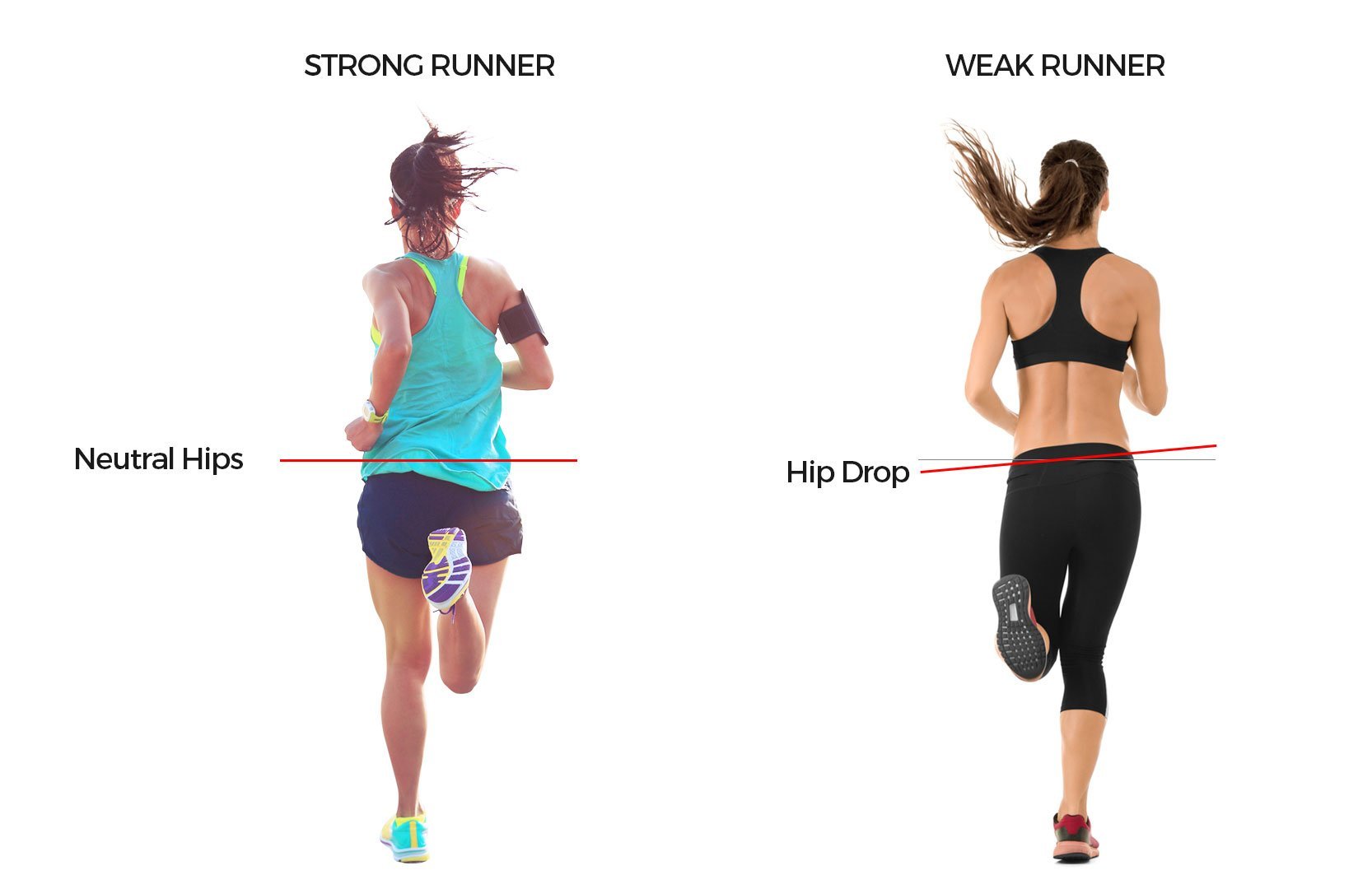Gluteus Medius
The gluteus medius is a little stinker. It’s a role in injuries throughout the body.
The gluteus medius is a major player in a lot of injuries. Weak or inhibition can have repercussions on the low back, hips, knees, ankles, and even the upper body. I’ll give some examples. When running, walking, skiing, hiking, or anything involving a period of single-leg stance, the glut med is responsible for keeping your pelvis level. It helps to maintain alignment at the hip, knee, and ankle.
In the picture above, the runner on the left has what we call neutral hips. This means her right hip does not drop down when she is weight-bearing on the left leg. Her gluteus medius is firing properly and holding her pelvis level. This also helps to keep her knee and ankle in a line under her hip. The runner on the right has a weakness in the gluteus medius. Her left hip drops below the level of her right when in stance. This in turn causes her upper body to have to lean to the right to avoid falling over. Her spine has to curve, which changes the alignment above the pelvis. Also, her right thigh angles inward, causing her knee and ankle to angle inward. Her leg moves under her center, not under her right hip. The malalignment can contribute to hip bursitis, gluteal tendinopathy, ITB syndrome, tarsal tunnel syndrome, posterior tibial tendinopathy, low back pain, mid back pain, shoulder pain….and we could argue that it may contribute to neck and jaw pain.
If you are dealing with pain, you can easily assess your gluteus medius function by performing a Trendelenburg Test. Stand in front of a mirror. Make sure you can see your waistband. Stand on one foot for 30 seconds. You can hold onto something lightly for balance if need be. Watch to see if the opposite hip drops down. If you see your waistband tip and angle downward, that is a positive test. Note that a small hip drop is normal.
https://physicaltherapyweb.com/trendelenburg-test-orthopedic-examination-hip/
Did you see a hip drop? If so, this is an easy fix by strengthening your gluteus medius. Research shows that the exercise that activates the gluteus medius the most is a side-lying leg lift (hip abduction). Here is a picture:
There are a few nuances to pay attention to in order to maximize gluteus medius firing. Lie on your side and ensure your hips are stacked vertically or tipped a little bit forward. Keep your top knee straight. Tighten your butt muscles and then lift your top leg towards the ceiling and slightly behind you. You can see in the picture that my leg is moving up and back in a diagonal motion.
You should feel your muscle working deep in the gluteal area (right on the side of the cheek). Work up to 2 sets of 15, 3 to 7 days a week.
Reach out with questions!
Cara





